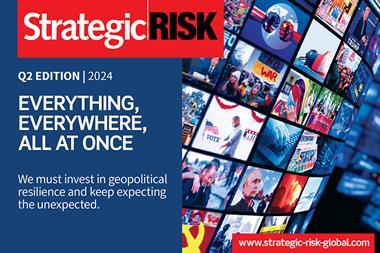Ahead of this month’s Dive In festival, two senior risk managers give their view on diversity and inclusion in the risk and insurance industry. Here, Karla Gahan of VinciWorks, says “by relying so heavily on shortcuts, we are tapping into our biases and risk making poor choices”

I’ve been considering how bias impacts our decision-making processes and whether we as risk managers can do anything to counter the negative impacts that this has on our organisations. As risk managers, to remain relevant, we need to become more aware of such behavioural drivers and adapt our skills to ensure we are helping to influence change.
Many firms are implementing unconscious bias training as part of their diversity and inclusion agenda. I would counter that this training does not work and a more fundamental shift is needed. The term ‘unconscious bias’ (or implicit bias) tends to be used as a shorthand for unacceptable behaviour that relates to gender, race, religion, sexuality and age. I propose that these forms of discrimination, either conscious or not, could easily fall under the heading of unlawful behaviour and do not necessarily need to be the primary focus of discussion about unconscious bias.
As a species, we’ve evolved to develop shortcuts in our decision-making processes to enable us to go about our daily lives in the most efficient manner.
These shortcuts open us up to biases that can have a detrimental effect on our decision-making and behaviour towards others – for example, whether to include people in a team, promote them, value their opinion, and many other choices.
While we may consider ourselves to be good decision-makers or judges of character, by relying so heavily on these shortcuts, we are tapping into our biases (unconscious or otherwise), and we risk making poor choices.
GIVE BIASES A NAME
To be able to identify and counter these biases, we need a common language that we can use as part of our organisational culture. By naming these behaviours, we can then focus on changing them. As risk managers, if we learn about and adopt this language, and consider the drivers that can change behaviour, we can help to shape a better risk culture, and encourage better decision-making.
For example, when undertaking risk assessments, or attending risk committee meetings, there is the potential that the biases influencing the outcome of those sessions mean that you are liable to arrive at your conclusions without considering alternatives:
- Confirmation bias – Are you capturing what people want you to hear rather than an accurate picture of what is or could be having an impact on your organisation?
- Status quo bias – Do people not want to make any changes to the risks or controls as it will take (cognitive) effort to consider alternatives?
- Availability bias – Will people talk about risks that relate to what is at the forefront of their mind, either in terms of what they’re working on or what’s in the press at the time of your discussion?
NUDGE, NUDGE
There are a number of techniques available to us to help to either counter or harness existing biases to shift behaviour, including the concept of ‘nudging’.
In practical terms, this means that the brain can be ‘nudged’ or guided into making better decisions in line with its own interests or good behaviours. A nudge influences behaviour without inducement, threat or argument and still allows for freedom of choice. It is designed to help anchor the unconscious mind on the desired outcome without the need to engage the rational part of the brain that may sabotage the behaviour. It’s about framing options to influence choices.
We as risk managers need to learn about the behavioural risks to our organisations and how to ensure that we build in practices that will make us more resilient.
Most importantly, we need to ensure that a variety of perspectives is available to us – diverse ways of thinking will enable us to make better decisions.




















No comments yet